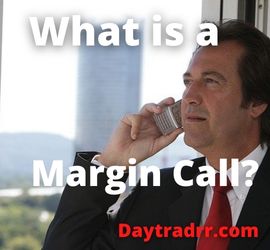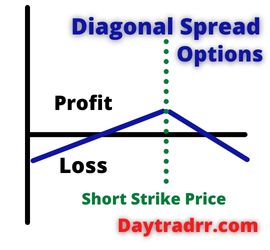What Is a Margin Call?
 A margin call is a demand from your broker to boost the equity in your trading account. It occurs when a margin account loses value and dips below the maintenance margin requirement level.
A margin call is a demand from your broker to boost the equity in your trading account. It occurs when a margin account loses value and dips below the maintenance margin requirement level.
A margin call is triggered when the value of an investor’s margin account falls below the required amount set by the broker. Securities purchased using borrowed money are held in an investor’s margin account. Typically, these are a combination of the investor’s own money and a percentage borrowed from the investor’s broker. A margin call is a broker’s demand that an investor deposit additional funds or securities into the account. This is to bring it up to the minimum amount, known as the maintenance margin. A margin call is an indication that the value of one or more of the securities held in the margin account has fallen. When a margin call happens, the investor must decide whether to deposit more funds into their account or sell some of the assets in their account.
Margin Calls – A Closer Look
When an investor buys and sells securities using a combination of their own funds and money borrowed from a broker, it is called buying on margin. An investor’s equity in the investment is equal to the market value of the securities, minus the amount of the borrowed funds from their broker.
A margin call occurs when an investor’s equity falls below a specific percentage requirement called the maintenance margin. It is calculated as a percentage of the total market value of assets. Usually, there is a set amount of time for the investor to comply. However, if the investor is unable to pay the amount required, the broker may be forced to sell securities in the account at market value. This action is necessary to bring the value of their portfolio at least up to the account’s maintenance margin
The Financial Industry Regulatory Authority (FINRA), regulates the majority of securities firms in the United States. Both The New York Stock Exchange (NYSE) and FINRA require investors to hold at least 25% of the entire value of their assets as margin. Some brokerage firms have a higher maintenance requirement—as much as 30% to 40%. Obviously, the statistics and prices associated with margin calls are dependent on the margin maintenance percentage and the shares involved.
Margin Call Price Formula
An investor can closely calculate the price that a stock has to drop to in order to trigger a margin call. Basically, it will occur when the account value, or account equity, equals the maintenance margin requirement (MMR). The formula would be expressed as:
Margin Call Formula: Account Value = (Margin Loan) / (1 – MMR)
- Account Value is the initial purchase price of a security expressed in dollars.
- Margin Loan is the amount expressed in dollars that the investor borrowed from the broker.
- MMR is the maintenance margin expressed as a percentage that must be maintained in a margin account.
Example
Assume an investor creates a margin account with $5,000 of their own money and $5,000 borrowed as a margin loan from their brokerage firm. They make a margin purchase of 200 shares of a stock at a price of $50. According to Regulation T, which controls the amount of credit that brokerage firms and dealers may give to consumers for the purchase of stocks, an investor can borrow up to 50% of the purchase price. Assume this investor’s broker has a maintenance margin requirement of 30%.
The investor’s account has $10,000 worth of stock in it. In this example, a margin call will be triggered when the account value falls below $7,142.86 (i.e. margin loan of $5,000 / (1 – 0.30), which equates to a stock price of $35.71 per share. Using the example above, let’s say the price of this investor’s stock falls from $50 to $35. Their account is now worth $7,000, which triggers a margin call of $142.86. In this scenario, the investor has one of three choices to rectify their margin deficiency of $142.86:
- Deposit $142.86 cash in the margin account
- Deposit marginable securities worth $142.86 in their margin account, which will bring their account value back up to $7,142.86
- Liquidate stock worth $333.33, using the proceeds to reduce the margin loan; at the current market price of $35, this works out to 9.52 shares, rounded off to 10 shares. (Source: investopedia.com)
Consequences
If a margin call is not satisfied, a broker may cancel out all open positions in order to restore the account to its minimal value. They are usually able to do so without the investor’s permission. In essence, the broker has the authority to sell any stock holdings in the required quantities without informing the investor. In addition, the broker may charge the investor a commission on the transactions. Further, the investor is liable for any losses incurred throughout this transaction.
How to Avoid a Margin Call
The simplest method to prevent a margin call is to not have one in the first place. Unless you’re an experienced trader, buying assets on margin isn’t necessary to produce great long-term profits. However, if you have a margin account, there are a few things you may do to avoid a margin call.
Steps to take
- Have extra cash available – Rather than putting all of the money into securities, the investor can leave a cushion of cash available to help avoid margin calls. Cash has a constant value and will not depreciate even if the value of securities varies. Having extra cash accessible should greatly limit the chance you receive a margin call.
- Limit volatility – By holding various types of securities, an investor can diversify his or her portfolio. Stocks, bonds, commodities, and derivatives are examples of alternate financial products. A diverse portfolio can assist an investor to tolerate unpredictability in the financial markets. Being too concentrated could leave you vulnerable. Diversification should help limit the chances of an extreme decline that might trigger a margin call.
- Make regular cash installments – Every month, interest is charged to an investor’s margin account for borrowed funds. Typically, margin loans do not have a set repayment schedule. Therefore, the investor should devise a clear strategy for paying interest charges on a regular basis. Making regular monthly interest payments can help to keep the outstanding loan balance under control.
- Set your own limits – Investors should establish their own maintenance limits. These should be greater than the minimum set by the broker. When the trader’s margin account balance falls below your imaginary limit, he or she should top up the account. A method like this can assist an investor in avoiding margin calls and forced sales of high-potential equities.
- Track your account closely – Most investors are better off not looking at their portfolios on a daily basis. However, if you have a significant margin balance, you’ll want to track it on a regular basis. This will keep you informed about where your portfolio stands. You can quickly determine whether you’re approaching the maintenance margin threshold. (Source: bankrate.com & corporatefinanceinstitute.com)
The 3 Types of Margin Calls
Federal (initial) margin call
You’ll get this call when you don’t have enough equity to meet the FRB’s initial requirement as determined by Regulation T. The initial requirement is 50% of the total cost of the trade. This includes commissions unless the stock is priced under $5. In that case, it’s 100%. A federal call is only issued as a result of a trade.
What you should do: You must meet the call by the trade date plus 4 business days.
Maintenance (house) call
When your equity falls below the broker’s maintenance threshold, you’ll receive a house call. You’ve already met the initial criteria (federal call) when purchasing the security. Therefore, a house call is usually the outcome of market movement. The maintenance requirements for a stock are based on its current market value, not its acquisition price. So if the price drops, you can get a house call. A price rise, on the other hand, can diminish or eliminate the house call. It’s the inverse for a short position. If the price rises, you may receive a house call. If the price falls, the house call may be reduced or eliminated.
What you should do: You must meet the call by Day 4.
Exchange (NYSE) call
You’ll get this call when your equity falls below the New York Stock Exchange (NYSE) requirement, currently at 25%. If you get an exchange call, your account probably was already in a house call.
What you should do: It’s critical that you cover an exchange call within 2 days. (Source: investor.vanguard.com)
How to Satisfy a Margin Call
You can satisfy a margin call in a number of ways:
- Send money – to your account by electronic bank transfer, wire, or check by overnight mail.
- Sell securities – in your margin account or buy securities to cover short positions.
- Exchange securities – or mutual funds from an account held in your name. Then, use the proceeds to purchase shares of your money market settlement fund.
- Deposit fully paid marginable securities – into your margin account, or send endorsed security certificates, or move securities from another brokerage account.
While you can choose how you want to meet a margin call, you must meet it by the due date. If you don’t, your broker has the right to sell the securities and other property in your account to cover the call. And, you won’t be able to choose what’s sold or liquidated. (Source: ibid)
Not Meeting a Margin Call
The gravity of a margin call cannot be overstated. This is especially true if it results in debts that you cannot afford to pay. If you are unable to meet a margin call, your account’s assets will be liquidated to repay the obligation. Any remaining balance outstanding becomes an unsecured debt in default. The following are some of the things that can be affected.
Credit Score
Credit agencies will be notified of the debt. This will make borrowing money more difficult because it will lower your credit score. Access to your other lenders’ goods may be restricted. A credit card firm, for example, may close your account. To compensate for the risks, they may hike your interest rates. If you have company loans, you may also discover the total amount called due and payable on those debts. You may also have a more difficult time finding a new job. Some states allow businesses to check credit records for prospective workers.
Insurance Rates
A universal default may be triggered. You may find your insurance rates on your home, cars, or other policies increasing in states where it is permitted.
Lawsuit
The broker may file a lawsuit against you, demanding immediate payment as well as legal fees. The remedies available depend on your state’s laws. However, they may include compelling you to divulge your full financial position under oath. Bank accounts and other personal property may also be garnished or confiscated, including the sale of real estate interests.
(Source: thebalance.com)
Margin Call – Example
Assume an investor spends $50,000 of their own money to purchase $100,000 of Johnson & Jackson Inc. shares. The remaining $50,000 is borrowed from the investor’s broker. The investor’s broker has a 25% maintenance margin. The investor’s equity as a percentage is 50% at the moment of acquisition. This formula is used to compute the investor’s equity:
Investor’s Equity = (Market Value of Securities – Borrowed Funds) / Market Value of Securities. ($100,000 – $50,000) / ($100,000) = 50%.
At the time of purchase, the investor’s equity is greater than the 25% maintenance margin. Now, assume that the value of the purchased securities falls to $60,000 two weeks later. As a result, the investor’s stake is reduced to $10,000 or 16.67% ($60,000 – $50,000 / $60,000).
This is now below the maintenance margin of 25%. The broker makes a margin call and requires the investor to deposit at least $5,000 to meet the maintenance margin.
The broker requires the investor to deposit $5,000 because the amount required to meet the maintenance margin is calculated as follows: Amount to Meet Minimum Maintenance Margin = (Market Value of Securities x Maintenance Margin) – Investor’s Equity. So the investor needs at least $15,000 of equity–the market value of securities of $60,000 times the 25% maintenance margin-in their account to be eligible for margin. But they only have $10,000 in investor’s equity, resulting in a $5,000 deficiency: ($60,000 x 25%) – $10,000. (Source: investopedia.com)
Up Next: What are Covered Calls in Options Trading?
 A covered call is a two-part options trading strategy in which stock is purchased or owned and calls are sold against the underlying security. Covered calls refer to a financial transaction in which the investor selling call options owns an equivalent amount of the underlying security.
A covered call is a two-part options trading strategy in which stock is purchased or owned and calls are sold against the underlying security. Covered calls refer to a financial transaction in which the investor selling call options owns an equivalent amount of the underlying security.
To do so, an investor with a long position in an asset writes (sells) call options on that asset to produce an income stream. The investor’s long position in the asset serves as the cover since it ensures that the seller can deliver the shares if the buyer of the call option exercises it.
Whether the shares are purchased before the calls are sold or purchased at the same time, the resulting position is described as a covered call position. A buy-write transaction occurs when an investor simultaneously purchases a stock and writes call options against that holding. An overwrite occurs when an investor writes a call option against shares he already owns.




